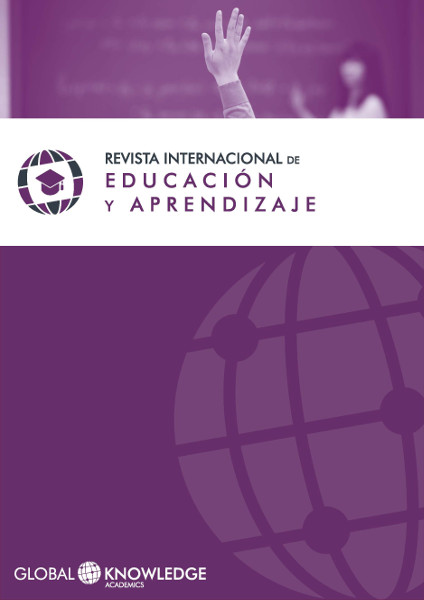Linkage in innovation between the University of Guadalajara and the pharmaceutical production sector in Jalisco. Does it reflect the transit towards knowledge societies?
DOI:
https://doi.org/10.37467/gka-revedu.v5.1381Keywords:
Collaborative Work, Industry, University, Innovation, Economic DevelopmentAbstract
This paper provides a characterization about the collaborative work between Universidad de Guadalajara and pharmaceutic industry. Through interviews applied to the responsible of innovation, we show how had been the development of researchers, government expenditure and the development of science and technology during 2010 to 2015.
Downloads
Global Statistics ℹ️
|
660
Views
|
173
Downloads
|
|
833
Total
|
|
References
Arechavala Vargas, R. (2013). Las universidades públicas mexicanas: los retos de las transformaciones institucionales hacia la investigación y la transferencia de conocimiento. Presentado en XV Latin Ibero-American Conference on Management of Technology.
Arocena, R., & Sutz, J. (2001). Changing knowledge production and Latin American universities. Research Policy, 30(8), 1221–1234. http://doi.org/10.1016/S0048-7333(00)00143-8 DOI: https://doi.org/10.1016/S0048-7333(00)00143-8
Arocena, R., & Sutz, J. (2005). Latin American Universities: From an Original Revolution to an Uncertain Transition. Higher Education, 50(4), 573–592. DOI: https://doi.org/10.1007/s10734-004-6367-8
Casalet, M., & Casas, R. (1998, septiembre). Un diagnóstico sobre la vinculación Universidad-Empresa CONACyT-ANUIES. Revista de la Educación Superior, 27(107), 1–5.
Chang, Y.-C., Yang, P. Y., Martin, B., & Chi, H.-R. (2016). Entrepreneurial universities and research ambidexterity: Amultilevel analysis. Elsevier. DOI: https://doi.org/10.1016/j.technovation.2016.02.006
CONACYT. (2014a). Padron de Beneficiarios 2009-2013 PEI. Recuperado a partir de http://www.conacyt.mx/index.php/fondos-y-apoyos/programa-de-estimulos-a-la-innovacion
CONACYT. (2014b). Programa de Estímulos a la Innovación. Recuperado el 5 de febrero de 2016, a partir de http://www.conacyt.mx/index.php/fondos-y-apoyos/programa-de-estimulos-a-la-innovacion
CONACYT. (2015). Agenda de Innovación de Jalisco. Recuperado a partir de www.agendasinnovacion.mx
CONACYT. (2016). Base de Datos Miembros SNI. Historico 2015.
Gibbons, M., Limoges, C., Nowotny, H., Schwartzman, S., Scott, P., & Trow, M. (1997). La nueva producción del conocimiento. La dinámica de la ciencia y la investigación en las sociedades contemporaneas (1a ed.). Barcelona: Ediciones Pomares-Corredor.
INEGI. (2010). Población, Hogares y Vivienda. Recuperado a partir de http://www3.inegi.org.mx/
INEGI. (2014). Censos Económicos. Recuperado a partir de http://www3.inegi.org.mx/
Martínez de Ita, M. E., Piñero, F. J., & Figueroa Delgado, S. A. (2013). El papel de la universidad en el desarrollo (1a ed.). México.
OECD. (2008). OECD Reviews of Innovation Policy MEXICO Overall Assessment and Recommendations.
OECD. (2010). THE OECD INNOVATION STRATEGY: GETTING A HEAD START ON TOMORROW.
ProMéxico. (2013). Industria Farmacéutica. Unidad de Inteligencia de Negocios. Recuperado a partir de http://mim.promexico.gob.mx/work/sites/mim/resources/LocalContent/368/2/130820_DS_Farmaceutica_ESP.pdf
Schumpeter, J. (1934). The theory of economic development (1a ed.). Estados Unidos de América: Harvard economics studies.
Secretaría de Economía. (2016). PROMÉXICO. Inversión y Comercio Jalisco. Recuperado a partir de www.promexico.gob.mx
Secretaría de Economía. (s/f). El sector farmacéutico en México. Recuperado a partir de embamex.sre.gob.mx
UdeG. (2016). Inicia UdeG 2016 con 927 especialistas en el SNI [Noticia]. Recuperado a partir de http://www.udg.mx/
UNESCO. (2005). Hacia las sociedades del conocimiento.
Villa Rivera, E. (2004). Construir el futuro en el presente. Elementos conceptuales y metodológicos para la planeación y desarrollo de instituciones de educación Superior. Materiales para la Reforma No. 16. IPN.
Downloads
Published
How to Cite
Issue
Section
License
Those authors who publish in this journal accept the following terms:
-
Authors retain copyright.
-
Authors transfer to the journal the right of first publication. The journal also owns the publishing rights.
-
All published contents are governed by an Attribution-NoDerivatives 4.0 International License.
Access the informative version and legal text of the license. By virtue of this, third parties are allowed to use what is published as long as they mention the authorship of the work and the first publication in this journal. If you transform the material, you may not distribute the modified work. -
Authors may make other independent and additional contractual arrangements for non-exclusive distribution of the version of the article published in this journal (e.g., inclusion in an institutional repository or publication in a book) as long as they clearly indicate that the work was first published in this journal.
- Authors are allowed and recommended to publish their work on the Internet (for example on institutional and personal websites), following the publication of, and referencing the journal, as this could lead to constructive exchanges and a more extensive and quick circulation of published works (see The Effect of Open Access).













